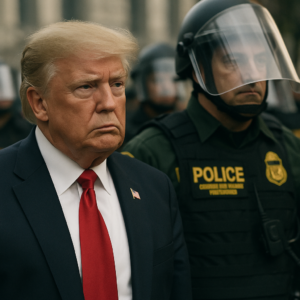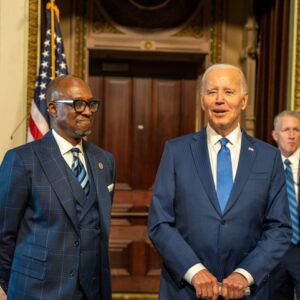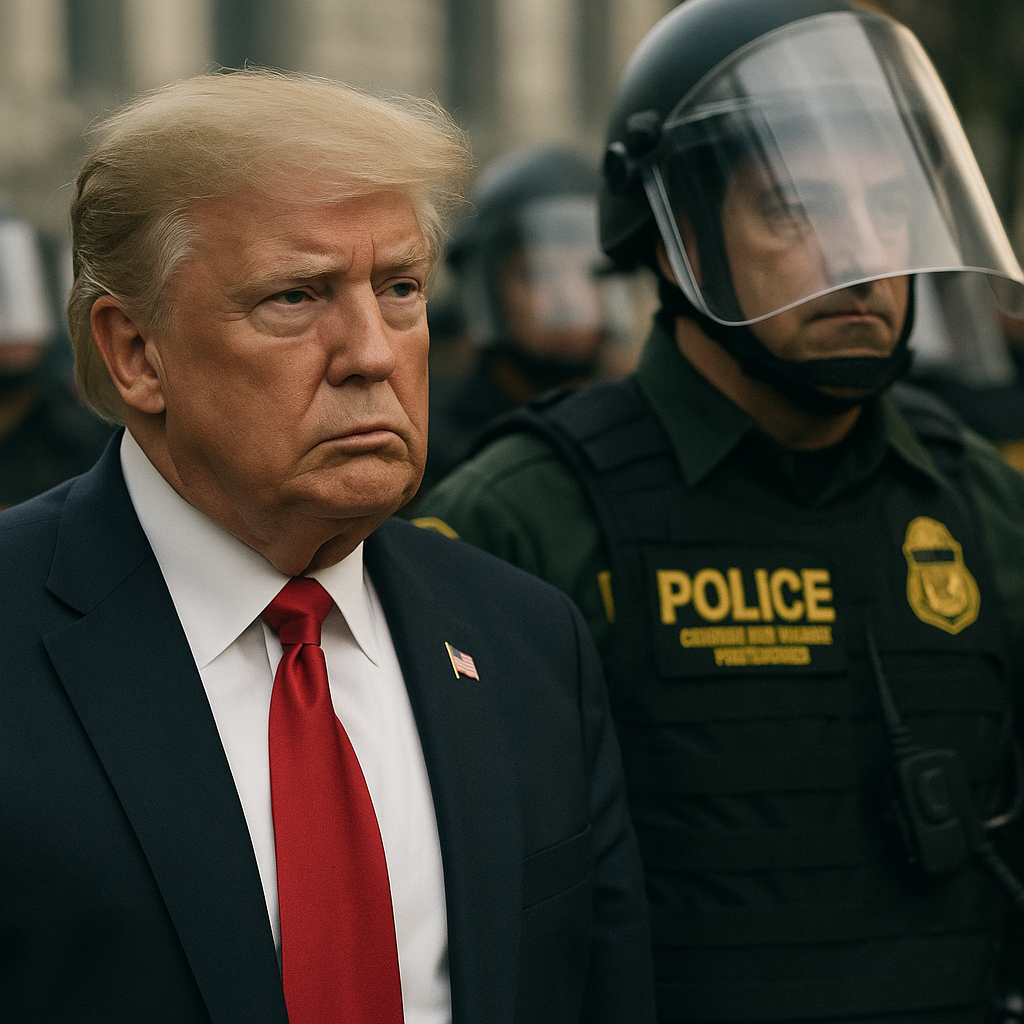By Damon Ellison, Habari Entertainment
From the very first day of his second term — coinciding symbolically with Martin Luther King Jr. Day — Donald J. Trump signalled an aggressive shift in federal policy. What we are witnessing is not merely a change of tone or a partisan agenda: it amounts to a structural assault on the protections and gains long fought for by Black Americans and other historically marginalised communities.
A Targeted Assault on DEI and Federal Protections
One of the keystones of the administration’s strategy is its dismantling of diversity, equity, and inclusion (DEI) initiatives across federal agencies and the broader workforce. On January 20, 2025, President Trump signed Executive Order 14151, titled “Ending Radical And Wasteful Government DEI Programs And Preferencing,” directing all federal departments to terminate DEI offices, programs, policies, and preferences. (White House)
The next day saw a companion order: Executive Order 14173 (“Ending Illegal Discrimination And Restoring Merit-Based Opportunity”), which revoked earlier landmark directives, including Executive Order 11246 — a bedrock of federal contractor affirmative-action and anti-discrimination law from the Johnson era. (Journal of Gender, Race & Justice)
Advocates and analysts warn that the effect is a rollback of decades of civil-rights enforcement designed to combat systemic barriers faced by Black Americans. (American Civil Liberties Union)
Federal websites began removing DEI resources, shuttering offices, and cancelling contracts supporting equity training and programs. (AP News)
From the vantage point of many communities, this looks less like reform and more like the erasure of gains.
Depriving federal agencies, contractors, and grantees of DEI mandates will not neutralise discrimination — it simply removes one of the tools used to uncover and rectify patterns of exclusion, disadvantage, and structural bias.
Immigration Enforcement Intensified: “Militarised” Raids, Citizens Targeted
Parallel to the domestic employment and equity front, the administration has unleashed a more overtly forceful immigration enforcement posture under policies that appear to extend collateral damage well into communities of colour — including U.S. citizens.
Mass raids, federal troops deployed in cities, and landmark operations like Operation Midway Blitz in Chicago demonstrate how enforcement is taking on a militarised character. (Wikipedia)
For example, a “military-style” — flash-bang grenades, rappelling from helicopters, zip-ties for families and children — raid in Chicago’s South Shore neighbourhood raised alarm among rights groups. (TIME)
Further, the American Immigration Council warned that a recent Supreme Court decision “clears the way for racial profiling during immigration raids and sweeps.” (American Immigration Council)
And although many raids are nominally directed at undocumented immigrants, there is documented evidence that U.S. citizens — disproportionately Black, Latino, or Indigenous — have been caught up in the dragnet. (Wikipedia)
One could argue it is not a sheer coincidence that many of these policies and tactics intensify where and when Black Americans already face systemic disadvantage — from over-policing to employment discrimination to exclusion from economic opportunity.
The Historical Continuum: From Jim Crow to Today
This current wave of policy is deeply tethered to a larger historical arc. The systemic disenfranchisement of Black Americans has taken many forms:
- The post-Reconstruction backlash, segregation, and the institutionalisation of Jim Crow.
- The violent suppression of Black advancement, as seen in events like the Tulsa Massacre of 1921.
- Voter suppression, redlining, economic exclusion, and the denial of full citizenship rights.
- Practices of using law-and-order, labour market regulation, and federal policy to extract wealth from Black communities while limiting their access to resources.
The Trump administration’s policy set — the purge of DEI, the workforce reductions (targeting federal workers and grants), the militarized enforcement of immigration law — can reasonably be interpreted as the next iteration of this pattern: diminishing Black collective power, reducing institutional protections, and increasing vulnerability to state control or state violence.
The explicit targeting of DEI is a message: that acknowledgement of structural racism, efforts to remedy it, and elevation of traditionally excluded groups are now framed as threats rather than societal goods. The message reinforces the idea that equity is ‘special privilege’ rather than the correction of historical injustice.
Why: Consolidation of Power, Wealth, and Control
Why is this happening now? At its core, the pattern reflects a strategy: divide, distract, and disempower.
By framing jobs and opportunities for Black Americans, women, immigrants, and other minorities as zero-sum threats to white, cisgender, Christian men — and by attacking institutions that enabled upward mobility, the current regime seeks to preserve and expand concentrated wealth and power.
The elimination of DEI initiatives and affirmative-action programs doesn’t just impact representation — it affects who gets hired, who receives federal contracts, who gains access to higher education, who participates in funding streams, and who builds generational wealth.
The immigration enforcement surge, especially in working-class, urban Black or Black-adjacent communities, delivers a spectacle of state power, fear, and disruption that further fragments mobilised community resistance.
Meanwhile, the structural focus remains on protecting the interests of the few: corporate boards, major investors, property owners, and the financial sector — many of which benefit when public institutions are weakened, when Black economic mobility slows, and when resources are diverted away from collective uplift.
The Implications Are Severe for Black Americans
What this means in concrete terms for Black communities:
- Workforce and federal employment: With DEI programs eliminated and the rescission of affirmative-action mandates, Black candidates risk being evaluated solely through traditional gate-keeping structures — rather than receiving any structural support to overcome historical disadvantages.
- Grants, public spending, and resource access: The cancellation of “equity” and “environmental-justice” programmes means Black and low-income communities lose federal resources to which they were gaining marginal access.
- Immigration-style operations in Black neighbourhoods: While not all targets are Black, the use of militarised tactics in urban settings sends a broader signal: the state has the right to swoop in, detain, and physically displace people without accountability. Fear reverberates in communities already facing economic precarity.
- Political power suppression: By undermining institutions and protections, the regime weakens the ability of Black Americans to organise, advocate, and translate their growing demographics into sustained political influence.
- Generational wealth erosion: The combination of reduced public investments, weakened employment protections, and relentless enforcement creates a structural drift away from the accumulation of assets, participation in high-growth jobs, and access to capital.
The International and Domestic Echoes
It bears noting that these are not isolated American experiments. The rhetoric and tactics mirror aspects of authoritarian and exclusionary systems globally — from reinforcing a dominant ethnic or racial group as the “norm,” to dismantling structures that promote minority inclusion, to deploying state power in the name of security or “law and order.”
Domestically, the echo is loud: when DEI is declared “radical and wasteful,” when federal protections are pulled back, when immigrants and citizens alike are subject to warrantless or brutal detentions — there is a continuity with past regimes of racial terror in the U.S. (e.g., Jim Crow, mass deportations during the 1930s) and with colonial-era state suppression abroad.
What Must Be Done
For Black Americans and for the broader collective of working and middle-class people, standing up means:
- Documentation and legal challenge: Scrutinise and challenge executive orders and enforcement operations that bypass constitutional rights.
- Political mobilisation: Translate demographic strength into sustained electoral, policy, and grassroots pressure.
- Institution building: As federal protections weaken, local, state, and community institutions must fill the gap — supporting Black entrepreneurship, labour organising, and access to capital.
- Narrative framing: Importantly, this isn’t simply a “race issue” in isolation — it’s a class issue, a power issue, a governance issue. The frame must connect the assault on Black advancement with the broader assault on democracy, the public sphere, and collective goods.
- Solidarity across lines: This administration’s strategy of “divide and rule” means that only by building alliances across Black, immigrant, Indigenous, and working-class white communities can the structural logic be confronted.
Final word
Yes, the current administration is cleverly timing and executing an agenda whose immediate victims are historically marginalised communities — especially Black Americans. But the target is broader: the idea that a public institution can act to correct structural inequities. The target is our shared civic capacity to hold power accountable.
The new DEI-free federal model, the aggressive immigration enforcement, and the signalling that equity is an adversary — together, these amount to a retrenchment of the gains of the 20th-century civil-rights movement.
For Black America, this means turning up the volume: recognising the stakes, mobilising agency and refusing to accept that “merit” in a rigged system truly equals fairness.










More Stories
Person Shot Near N 25th Ave & W Greenway Rd in North Mountain Area of Phoenix
NABOB Black Media Summit & Power of Urban Radio Forum Convene Industry Leaders at the New USBC Campus—Formerly the Historic BET Campus
DoorDash Launches Emergency Food Response as SNAP Funding Cliff Threatens Millions